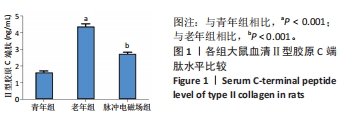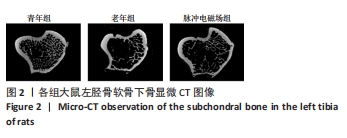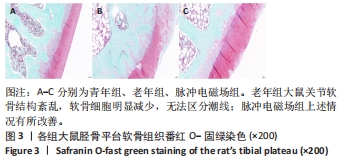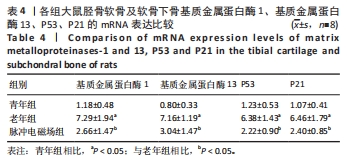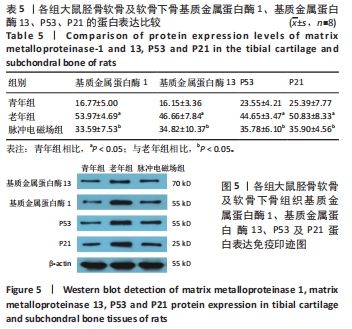[1] WANG X, PERRY TA, ARDEN N, et al. Occupational Risk in Knee Osteoarthritis: A Systematic Review and Meta-Analysis of Observational Studies. Arthritis Care Res (Hoboken). 2020;72(9):1213-1223.
[2] EBELL MH. Osteoarthritis: Rapid Evidence Review. Am Fam Physician. 2018;97(8):523-526.
[3] ILFELD BM, SHUSTER JJ, THERIAQUE DW, et al. Long-term pain, stiffness, and functional disability after total knee arthroplasty with and without an extended ambulatory continuous femoral nerve block: a prospective, 1-year follow-up of a multicenter, randomized, triple-masked, placebo-controlled trial. Reg Anesth Pain Med. 2011; 36(2):116-120.
[4] EFE ARSLAN D, KUTLUTÜRKAN S, KORKMAZ M. The Effect of Aromatherapy Massage on Knee Pain and Functional Status in Participants with Osteoarthritis. Pain Manag Nurs. 2019;20(1):62-69.
[5] HOLLA JF, STEULTJENS MP, VAN DER LEEDEN M, et al. Determinants of range of joint motion in patients with early symptomatic osteoarthritis of the hip and/or knee: an exploratory study in the CHECK cohort. Osteoarthritis Cartilage. 2011;19(4):411-419.
[6] 刘伦,王云鹭,李锡勇,等.髌下脂肪垫在膝关节骨关节炎发病机制中作用的研究进展[J].实用骨科杂志,2023,29(6):526-531.
[7] BERENBAUM F. Osteoarthritis as an inflammatory disease (osteoarthritis is not osteoarthrosis!). Osteoarthritis Cartilage. 2013;21(1):16-21.
[8] CHIEN SY, TSAI CH, LIU SC, et al. Noggin Inhibits IL-1β and BMP-2 Expression, and Attenuates Cartilage Degeneration and Subchondral Bone Destruction in Experimental Osteoarthritis. Cells. 2020;9(4):927.
[9] YAN JY, TIAN FM, WANG WY, et al. Age dependent changes in cartilage matrix, subchondral bone mass, and estradiol levels in blood serum, in naturally occurring osteoarthritis in Guinea pigs. Int J Mol Sci. 2014; 15(8):13578-13595.
[10] MARKOVIC L, WAGNER B, CREVENNA R. Effects of pulsed electromagnetic field therapy on outcomes associated with osteoarthritis : A systematic review of systematic reviews. Wien Klin Wochenschr. 2022;134(11-12):425-433.
[11] 马原军,于世宾.电磁脉冲在骨关节炎治疗中的作用机制研究进展[J].医学研究杂志,2021,50(5):15-19+168.
[12] 杨梦琪,张向东,寇赵淅,等.膝骨关节炎动物建模研究进展[J].现代疾病预防控制,2023,34(3):161-165.
[13] 吴伟,李慧,邹军,等.骨关节炎小动物模型的制备及量表评价[J].中国组织工程研究,2017,21(28):4529-4535.
[14] MCCOY AM. Animal Models of Osteoarthritis: Comparisons and Key Considerations. Vet Pathol. 2015;52(5):803-818.
[15] 刘宇涵,樊渝江,王启光.早期创伤性膝骨关节炎动物模型构建方案的比较[J].中国组织工程研究,2024,28(4):542-549.
[16] 郑梅梅,江自鲜,郑俭彬,等.骨关节炎病理变化过程的研究进展[J].云南中医药大学学报,2023,46(3):106-112.
[17] KATZ JN, ARANT KR, LOESER RF. Diagnosis and Treatment of Hip and Knee Osteoarthritis: A Review. JAMA. 2021;325(6):568-578.
[18] DIEPPE PA, LOHMANDER LS. Pathogenesis and management of pain in osteoarthritis. Lancet. 2005;365(9463):965-973.
[19] NAH HD, SWOBODA B, BIRK DE, et al. Type IIA procollagen: expression in developing chicken limb cartilage and human osteoarthritic articular cartilage. Dev Dyn. 2001;220(4):307-322.
[20] EYRE D. Collagen of articular cartilage. Arthritis Res. 2002;4(1):30-35.
[21] HE T, WU W, HUANG Y, et al. Multiple biomarkers analysis for the early detection of prosthetic aseptic loosening of hip arthroplasty. Int Orthop. 2013;37(6):1025-1031.
[22] BERRY PA, MACIEWICZ RA, CICUTTINI FM, et al. Markers of bone formation and resorption identify subgroups of patients with clinical knee osteoarthritis who have reduced rates of cartilage loss. J Rheumatol. 2010;37(6):1252-1259.
[23] 闻振坤,郭建斌,张育民.骨关节炎早期诊断生物学标志物的研究进展[J].中华实用诊断与治疗杂志,2017,31(11):1142-1144.
[24] 郭曹培,程飘涛,杨成兵,等.骨免疫与骨代谢[J].中国组织工程研究,2024,28(14):2261-2266.
[25] DEQUEKER J, GEUSENS P. Osteoporosis and arthritis. Ann Rheum Dis. 1990;49(5):276-280.
[26] 孙文渊,潘娅岚,郭杨,等.骨质疏松症与骨关节炎共病的影像学研究进展[J].中国医学影像学杂志,2023,31(5):550-554.
[27] DE ALMEIDA LGN, THODE H, ESLAMBOLCHI Y, et al. Matrix Metalloproteinases: From Molecular Mechanisms to Physiology, Pathophysiology, and Pharmacology. Pharmacol Rev. 2022;74(3):712-768.
[28] 武志娟,柴志欣,王吉坤,等.牦牛骨骼肌中特异基质金属蛋白酶及其功能相关基因的表达分析[J].中国畜牧兽医,2023,50(5):1774-1784.
[29] HU Q, ECKER M. Overview of MMP-13 as a Promising Target for the Treatment of Osteoarthritis. Int J Mol Sci. 2021;22(4):1742.
[30] MAHMOUD RK, EL-ANSARY AK, EL-EISHI HH, et al. Matrix metalloproteinases MMP-3 and MMP-1 levels in sera and synovial fluids in patients with rheumatoid arthritis and osteoarthritis. Ital J Biochem. 2005;54(3-4):248-257.
[31] 《中国骨质疏松杂志》骨代谢专家组,张萌萌,马倩倩,等.骨代谢生化指标临床应用专家共识(2023修订版)[J].中国骨质疏松杂志,2023,29(4):469-476.
[32] 肖云,尚奇,张学来,等.铁死亡在骨衰老中的机制[J].中国骨质疏松杂志,2023,29(4):562-566.
[33] CORYELL PR, DIEKMAN BO, LOESER RF. Mechanisms and therapeutic implications of cellular senescence in osteoarthritis. Nat Rev Rheumatol. 2021;17(1):47-57.
[34] ZHU J, YANG S, QI Y, et al. Stem cell-homing hydrogel-based miR-29b-5p delivery promotes cartilage regeneration by suppressing senescence in an osteoarthritis rat model. Sci Adv. 2022;8(13):eabk0011.
[35] XU M, FENG M, PENG H, et al. Epigenetic regulation of chondrocyte hypertrophy and apoptosis through Sirt1/P53/P21 pathway in surgery-induced osteoarthritis. Biochem Biophys Res Commun. 2020; 528(1):179-185.
[36] 时孝晴,揭立士,殷松江,等.软骨细胞衰老与骨关节炎的研究进展[J].医学研究生学报,2021,34(9):962-968.
[37] RIM YA, NAM Y, JU JH. The Role of Chondrocyte Hypertrophy and Senescence in Osteoarthritis Initiation and Progression. Int J Mol Sci. 2020;21(7):2358.
[38] 黄夏荣,胡莉芝,孙光华,等.电针干预老年膝骨关节炎大鼠关节软骨及软骨下骨P53、P21的表达[J].中国组织工程研究,2024, 28(8):1174-1179.
[39] WANG T, YANG L, LIANG Z, et al. Pulsed electromagnetic fields attenuate glucocorticoid-induced bone loss by targeting senescent LepR+ bone marrow mesenchymal stromal cells. Biomater Adv. 2022; 133:112635. |

